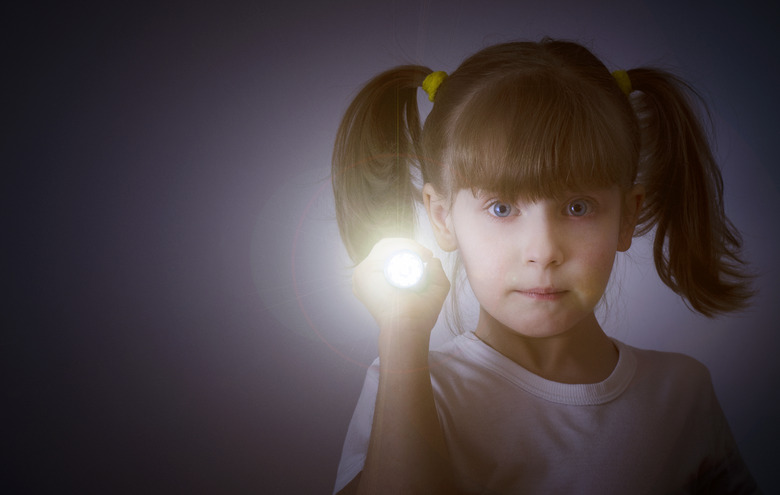4th Grade Science Fair Project Ideas
Science fair projects for the fourth grade must be easy and interesting enough for 9 and 10-year old pupils to carry out, explain a key aspect of science and promote understanding of how science works. The best project ideas are general concepts that give enough guidance, so the pupil knows what to do, but leave the details open for them to work out themselves. Students can then develop a project that interests them.
TL;DR (Too Long; Didn't Read)
Topic ideas for 4th grade science projects include a survey, a demonstration on the behavior of light, how different filters work and how balls bounce. Displays allow students to present their ideas, some of which can include hands-on demonstrations.
How Questions Influence Answers
How
Questions Influence Answers
Students must come up with a question on a neutral topic and ask the question two different ways of different people. For example, they can ask the participants in their survey, "Do cats make better pets than dogs," and ask other respondents, "Do dogs make better pets than cats?" Another question pair might be: "Do you like broccoli," and "Do you dislike broccoli?"
Have the students keep track of the answers and ask enough people so it's possible to tell whether the type of question made a difference. For example, for the first broccoli question, 14 people might say yes and 15 no, meaning an almost equal number of people like and dislike broccoli. For the second broccoli question, you might get 18 people saying yes and 12 saying no, meaning many more people dislike broccoli than like it. On the other hand, the same number of people may answer yes and no to the two questions. The student then explains how changing the question has or has not influenced how people answer. Have them compile their studies into a presentation they can easily display on a project board.
Demonstration of the Behavior of Light
Demonstration
of the Behavior of Light
Another project idea could show how light passes through different materials. Get several small identical flashlights and different materials, such as a piece of window glass, a prism, some plastic and a lens as well as several small glasses. The student fills the small glasses with different liquids, such as water, salt water, oil and syrup. They can place the items and glasses in front of a white background and shine light from the flashlights through each of them to show how the light behaves.
Some materials bend the light, some let it pass through unchanged, some break up the light into colors and some focus the light into a spot or line. The student can determine whether a pattern and prepare a demonstration of what happens to light and why.
Study of Filtration
Study of
Filtration
A filtration project begins with the student preparing mixtures and filtering them with different filters to try to separate them. The student records what happens and shows the mixtures and filters used. Liquid mixtures are probably the easiest to use in a demonstration and can include glasses full of muddy water, water mixed with fine sand, water mixed with pepper, water with salt or sugar, or any of these substances mixed with other liquids such as oil, soapy liquids or window cleaner. Possible filters could be paper towel, cloth, felt, lace or thick paper.
Depending on the details of the experiments, the demonstration could show how different filters work on one type of liquid mixture, different liquids with one type of filter or several liquids with several filters. The demonstration shows how to separate some mixtures, but how others pass through the filters and why this is the case.
How Balls Bounce
How Balls
Bounce
The student uses multiple different balls such as a basketball, a tennis ball, a golf ball, a rubber ball and a volley ball. They determine how high each ball bounces if dropped, not thrown. Then the student records the first and several subsequent bounces to see if a pattern exists. For the science fair display, the student shows the different balls and the records of how high each one bounced on the first and subsequent bounces, detailing any patterns found.
The easiest way to carry out these experiments is to attach a large white piece of paper to a wall or use a white wall as a backdrop. The student draws a line about 3 feet above the ground on the wall or paper. The pupil drops each ball from that line and then notes on the backdrop the height of the first and subsequent bounces. The student measures the heights of each bounce and finds patterns in the heights, such as whether each bounce is the same fraction of the previous bounce and to what extent the different balls bounce the same way.
References
Cite This Article
MLA
Markgraf, Bert. "4th Grade Science Fair Project Ideas" sciencing.com, https://www.sciencing.com/4th-grade-science-fair-project-ideas-13710531/. 23 March 2018.
APA
Markgraf, Bert. (2018, March 23). 4th Grade Science Fair Project Ideas. sciencing.com. Retrieved from https://www.sciencing.com/4th-grade-science-fair-project-ideas-13710531/
Chicago
Markgraf, Bert. 4th Grade Science Fair Project Ideas last modified August 30, 2022. https://www.sciencing.com/4th-grade-science-fair-project-ideas-13710531/
